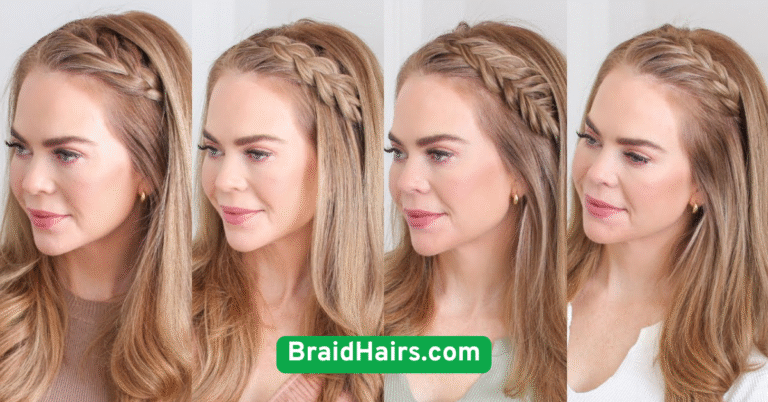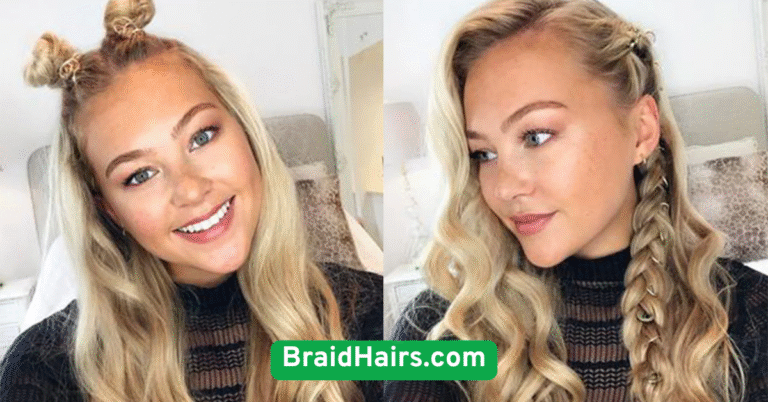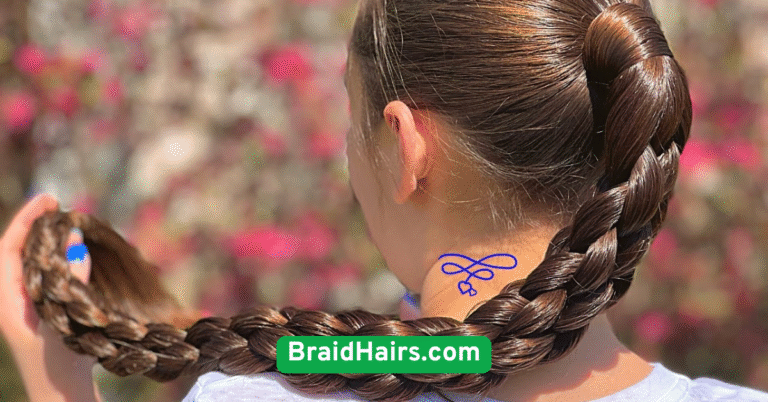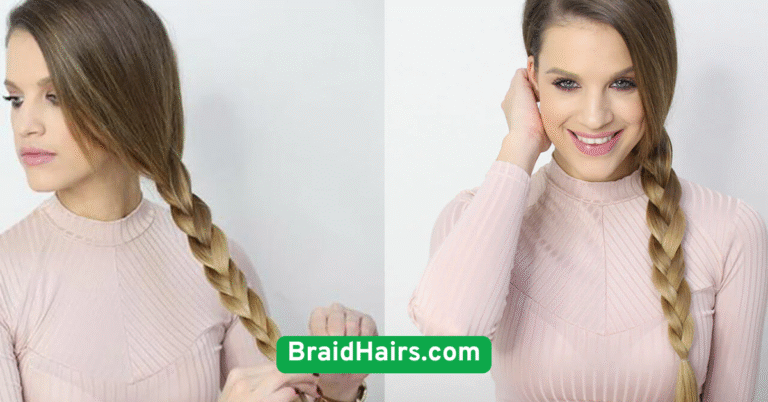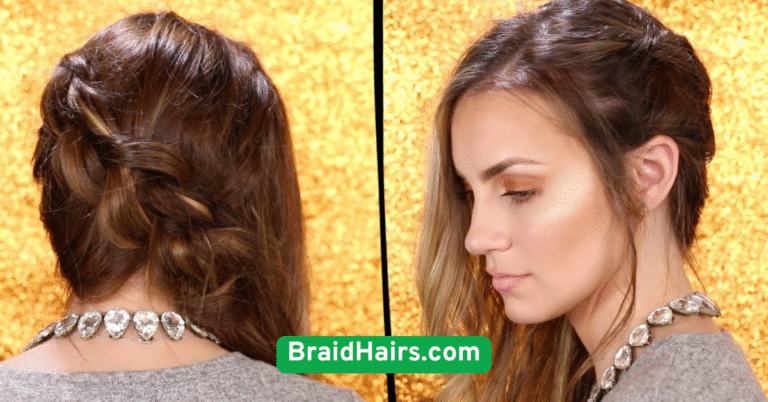Beginners12 Easy Braided Hairstyles for
Starting your braiding journey doesn’t have to feel overwhelming. Whether you’re styling your own hair for the first time or helping a friend, learning 12 easy braided hairstyles for beginners is a great place to start. These styles are simple, stylish, and a great way to gain confidence in your braiding skills.
Braids are one of the most versatile hairstyles. They work across all hair types, lengths, and textures. Not only do they look great, but they also protect your strands and help reduce daily damage caused by heat or friction. With a few basic tools and techniques, you’ll be able to braid with ease.
This guide walks you through 12 easy braided hairstyles for beginners that are perfect for school, work, or a casual day out. Each style takes only a few minutes to master and doesn’t require any advanced skills. Let’s get into the details of each beginner-friendly look.
1. Basic Three-Strand Braid
The basic three-strand braid is the foundation of most braided styles. It begins by separating your hair into three equal sections. Alternately cross the outer sections over the center until you reach the end, then secure with a band.This braid is perfect for practicing coordination and hand placement. It’s often used in beginner braiding techniques and can be worn tight or loose for different effects. If you want a more voluminous look, gently tug at each braid loop.It’s also a great option for everyday wear. From easy school hairstyles to office-ready looks, this braid fits right in. You can even make it part of your daily braid styles routine.No matter your experience level, the three-strand braid is a must-learn style that opens the door to more complex techniques.

2. Classic French Braid
The classic French braid involves weaving three sections of hair while adding new hair to each pass. Begin at the crown, and continue down to the nape, incorporating strands from the sides.It may look complicated, but it becomes easier with repetition. This braid is one of the most requested in step-by-step braids guides and is suitable for both straight and textured hair.French braids are ideal for easy protective styles, keeping your hair secure and frizz-free throughout the day. Add mousse or cream for a smooth finish and longer hold.As you practice, the style becomes part of your go-to everyday braid routine and works well in both formal and casual settings.

3. Simple Dutch Braid
The Dutch braid is a reverse version of the French braid. Instead of crossing the outer sections over, you braid them under the middle strand, creating a raised effect.This braid is very popular in quick braid styles because it adds texture and stands out more visibly on darker or thicker hair types. It works well for both long and medium lengths.Like the French braid, you add hair to each section as you go. It’s a great way to learn structure and technique in braid hairstyles with no experience required.With practice, the Dutch braid becomes a stylish base for other looks like buns, pigtails, or half-updos.
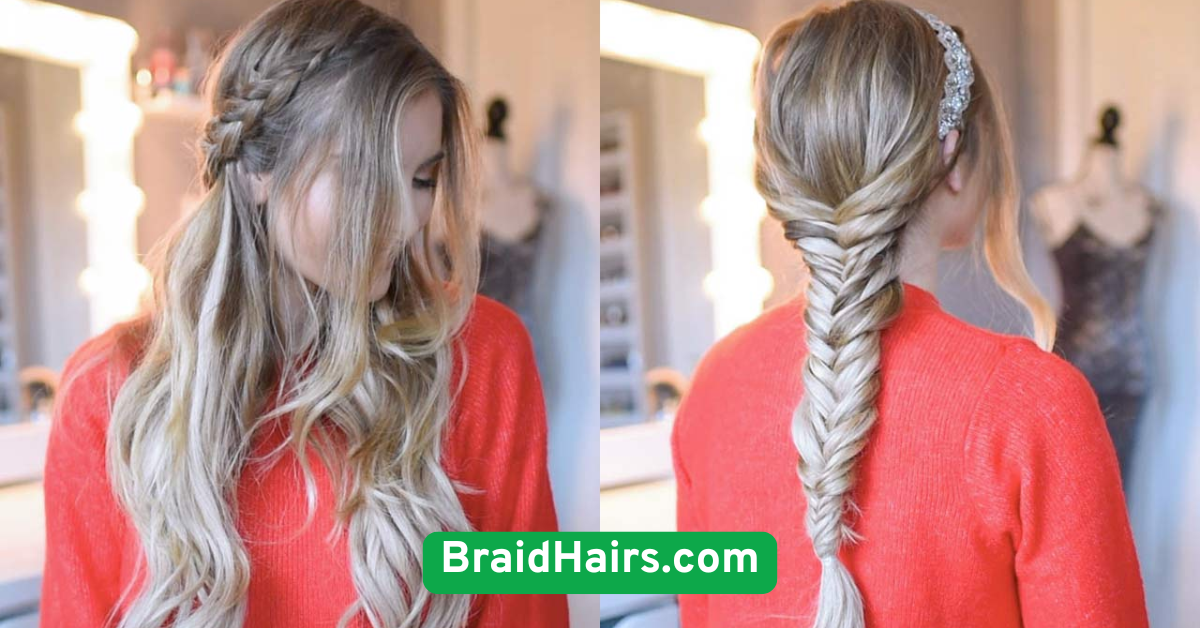
4. Side Braid with Texture
The side braid with texture is perfect for casual looks and takes only a few minutes. Simply pull your hair to one side and begin a loose three-strand or Dutch braid, letting small pieces fall out naturally.This style is often seen in casual braid tutorials because it creates a relaxed, romantic effect. It’s great for wavy or curly hair types and suits all lengths.You can pair it with a clip, scrunchie, or ribbon for added flair. It’s an ideal option for cute braided looks on the go.Even if you’re just starting out, this braid helps you play with texture and looseness for different aesthetics.
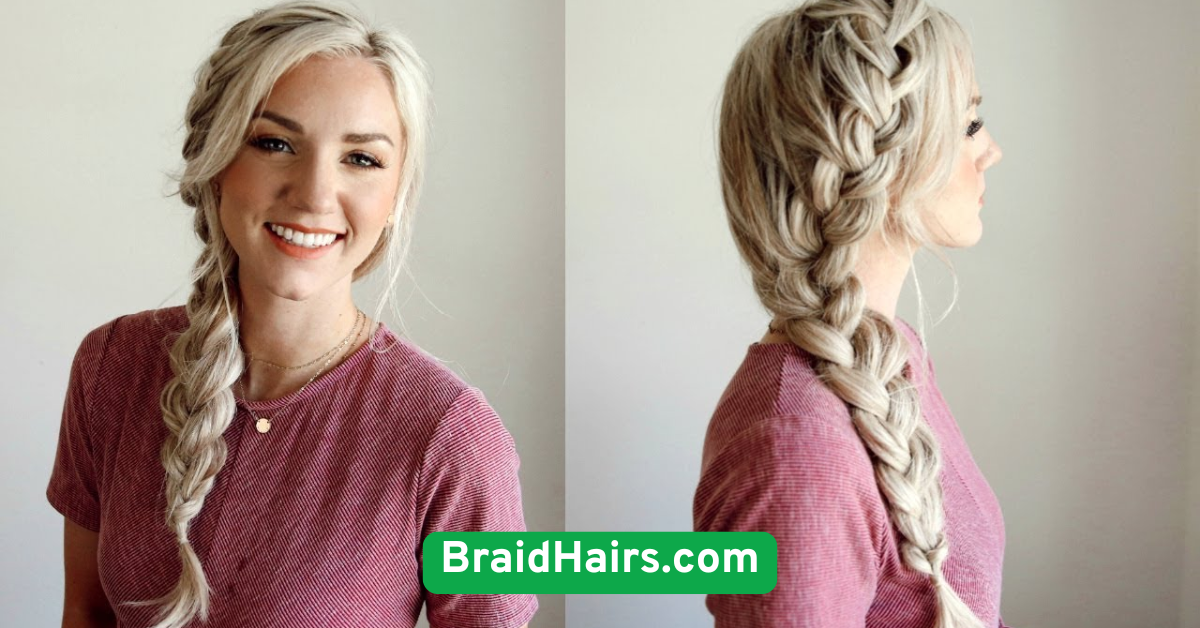
5. Half-Up Braided Style
The half-up braided style combines a braid with free-flowing hair. Start by braiding two sections from each side of your head, then tie or pin them together in the back.This look works especially well as a braided hairstyle for short hair, since it focuses on the top section. It keeps your face clear while letting your length shine.It’s also part of many back-to-school braids lists for its mix of elegance and ease. You can incorporate a twist or add accessories like beads or clips.This is one of the easiest ways to elevate your basic hair routine while still keeping things simple.
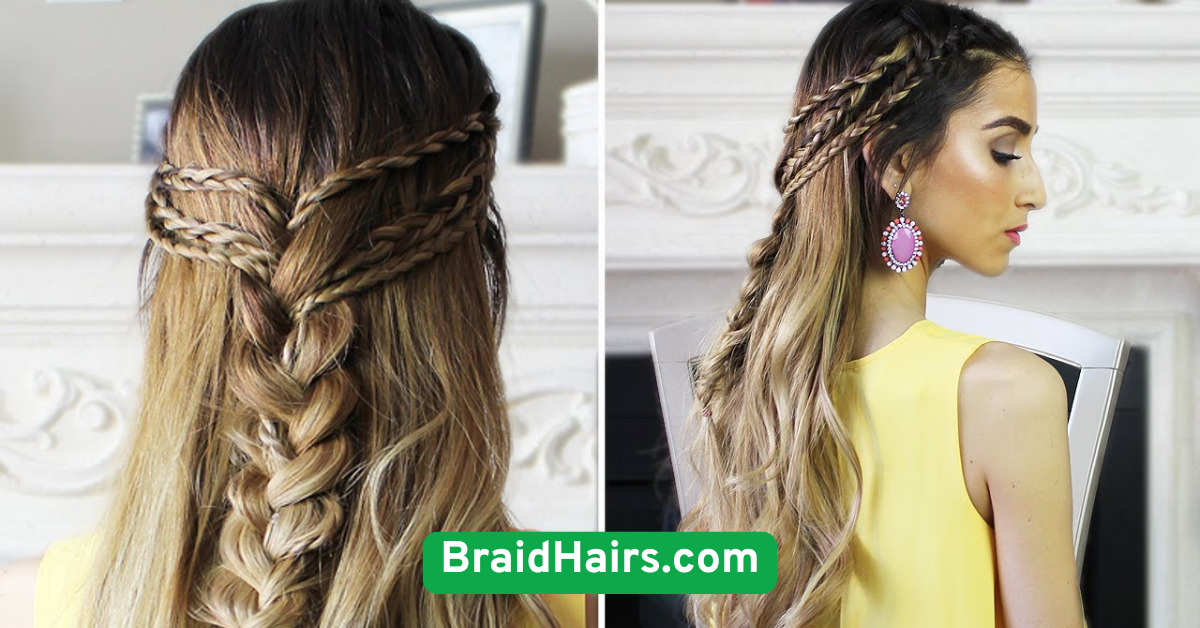
6. Braided Ponytail for Everyday Wear
The braided ponytail adds flair to a traditional pony. Start with a high or low ponytail and braid the loose hair. You can use a three-strand, rope, or fishtail braid for variety.This style belongs in every quick braid styles lineup. It’s ideal for gym days, workdays, or even nights out, depending on how you accessorize.Use it as a no heat braid look to give your hair a break from styling tools. Add dry shampoo at the roots for added volume.Whether you’re a total beginner or just in a rush, this style is efficient and effective.
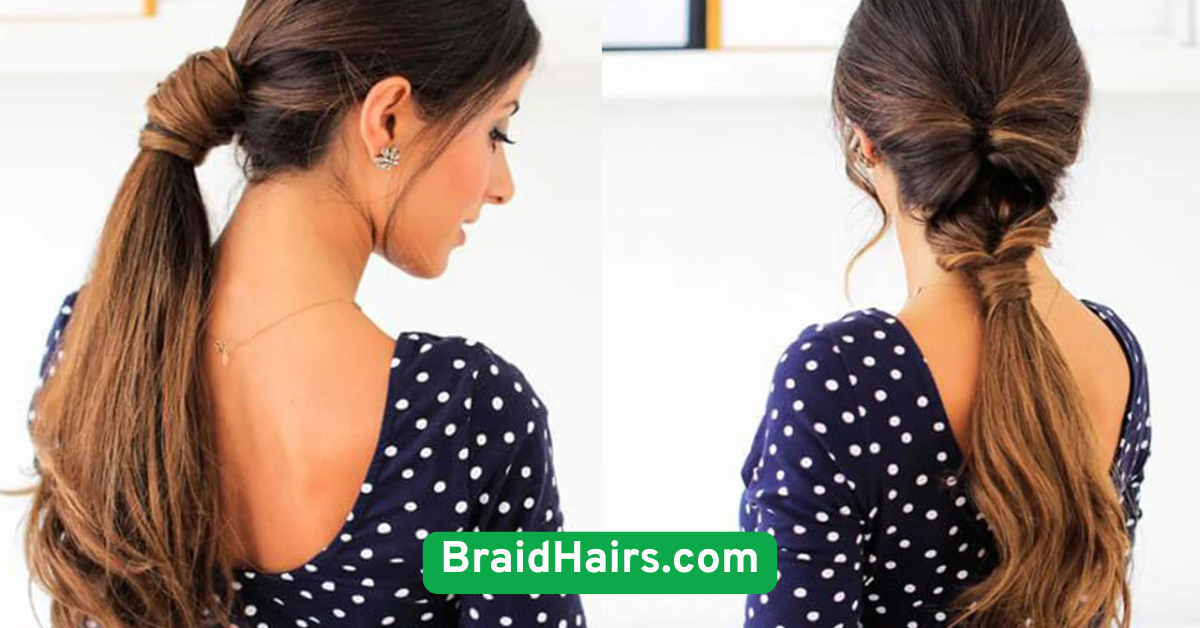
7. Pigtail Braids
Pigtail braids are youthful, fun, and very beginner-friendly. Part your hair down the center and braid each half separately into three-strand braids.This style is commonly featured in braid for kids and beginner guides due to its simplicity. You can wear them tight or loose, depending on the look you want.Great for practice hair braiding, it helps build confidence and muscle memory. You can later progress into Dutch or French pigtails.Add colored elastics or clips for a touch of fun and personality.
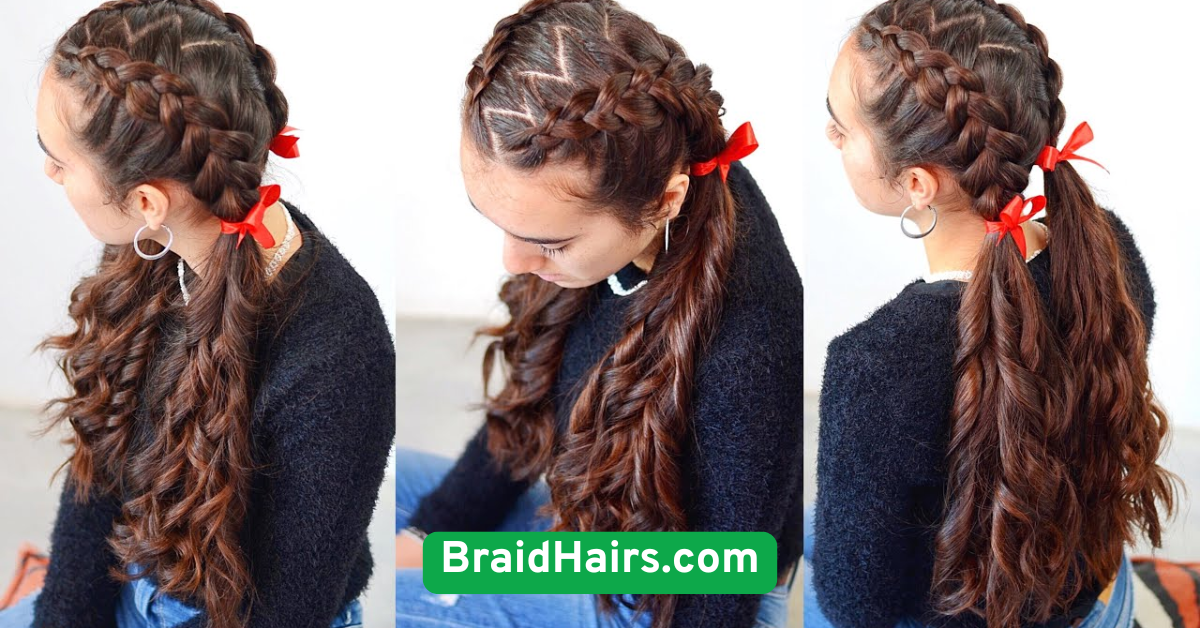
8. Crown Braid for Beginners
The crown braid looks complex but is quite simple with a basic technique. Braid two sections from behind your ears, wrap them around your head, and pin them in place.This is one of the more formal easy protective styles, great for weddings, date nights, or special events. It gives off an elegant vibe while still being manageable.This style also features in many simple crown braids tutorials for those with medium or long hair. It can also be done with mini twists if your hair is fine.Start with soft braids and pin carefully for a graceful finish.
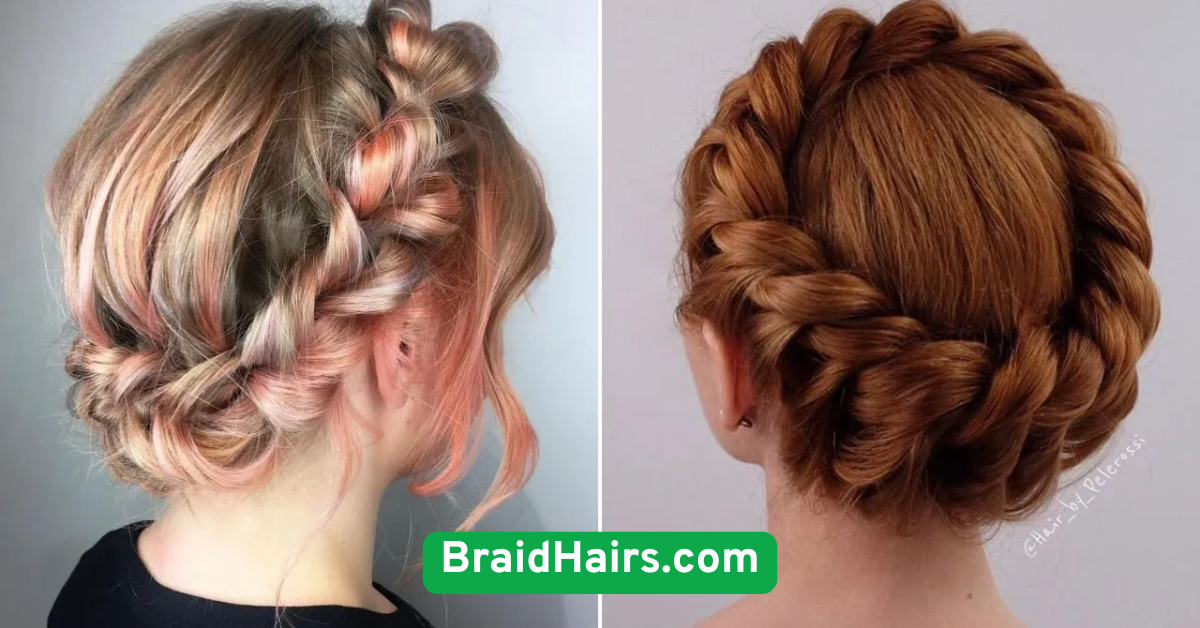
9. Braided Bang Pull-Back
If you have bangs or short front layers, the braided bang pull-back is your best friend. Just braid the front section and pin it back behind your ear.This technique is helpful in braiding short hair and keeps the front tidy on busy days. It pairs well with buns, ponytails, or loose hair.It also fits the mini braid style aesthetic, adding a small detail that transforms your whole look.Even on bad hair days, this braid offers a quick, cute fix.

10. Headband Braid from One Side
The headband braid starts behind one ear and works across the crown like a headband. It can be done with a French or Dutch braid depending on preference.This look falls under headband braid easy styles that are both chic and comfortable. It’s great for keeping hair out of your face during study sessions or long days out.It also suits various hair types and lengths, making it highly versatile. If you’re new to braiding, this is a rewarding style to learn.Pair it with loose curls or a bun for added drama.

11. Rope Twist Braid
The rope twist braid only needs two sections. Twist each one in the same direction, then wrap them around each other in the opposite direction. Secure at the bottom.It’s one of the fastest low effort braid styles you can learn. Great for ponytails or side braids, it holds well and looks sleek.This style is used frequently in twist braid basics and is perfect for thick or layered hair.Try this when you want a new look but are short on time.
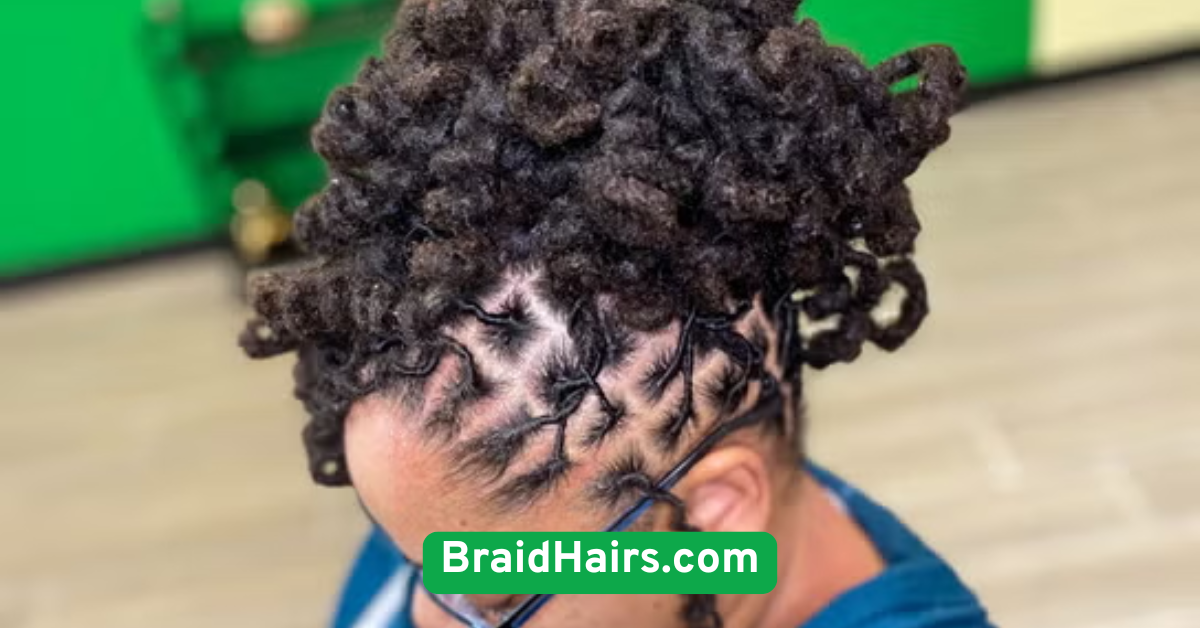
12. Mini Accent Braids for Detail
Mini accent braids are small braids placed within your loose hair. You can do one or several, wherever you want a subtle highlight.These braids add flair without much effort and are part of many cute braided looks seen on social media. They work well for all textures and are especially cute on short hair.Use beads or wrap the ends with colored string for a fun twist. It’s the easiest way to try out braids without committing to a full style.Add them to your daily braid styles routine for instant style upgrade.
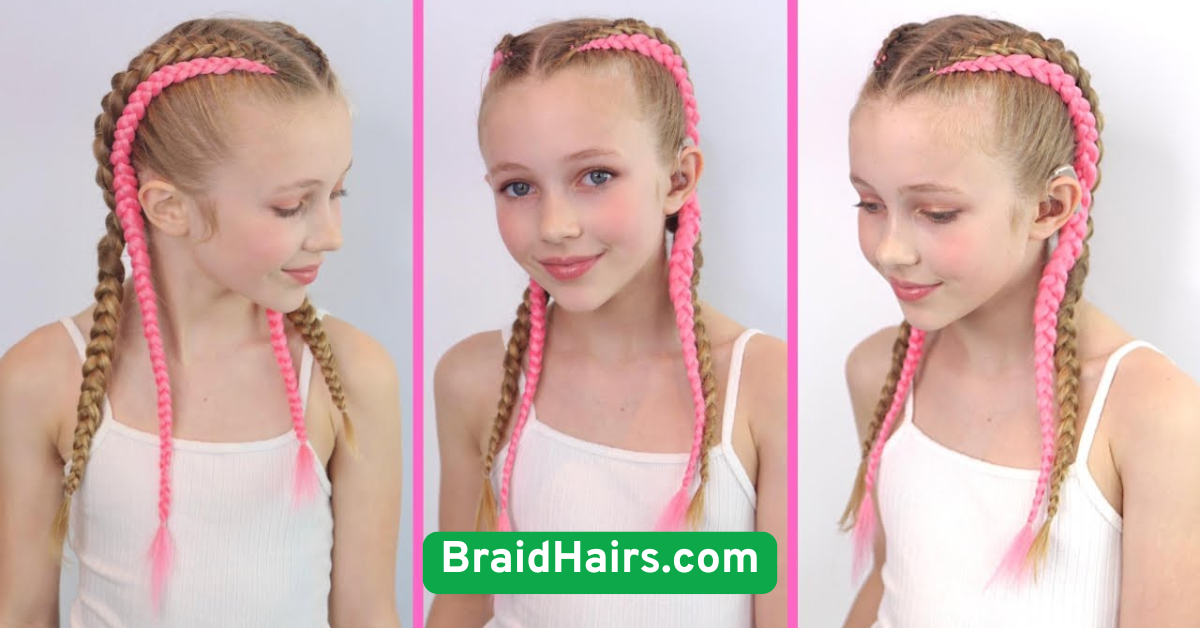
Conclusion
Starting your braiding journey doesn’t have to be difficult. These 12 easy braided hairstyles for beginners are proof that with just a little practice, you can create stylish, confident looks on your own. Whether you have short hair, long waves, or textured curls, there’s something here for everyone.
Each braid in this guide helps you build a strong foundation while experimenting with your unique style. From simple twists to braided crowns, you can master the basics and gradually move on to more intricate designs.
Make braiding part of your everyday routine. With these beginner-friendly options, your confidence—and your hair—will be looking better than ever.
FAQs
Q1: How long does it take to learn the basic braided styles?
With just a few practice sessions, most people can learn basic braids in under a week. Styles like the three-strand braid and rope twist are very simple, while others like the French braid might take a few more tries to master.
Q2: What tools are needed for beginner braiding?
You only need a comb, hair elastics, bobby pins, and optionally a styling cream or light gel. These basic tools will help you achieve clean sections and hold your braid in place all day.
Q3: Can I braid short hair easily?
Yes, styles like the braided bangs, crown braid, and mini accents work very well on short hair. As long as your strands are long enough to grip, you can braid them. Just start with smaller sections.
Q4: Should I braid on clean or unwashed hair?
Braiding works on both clean and slightly dirty hair. In fact, second-day hair often holds better. Use a bit of dry shampoo or mousse to add texture if your hair is freshly washed.
Q5: How can I stop my braids from falling apart too quickly?
Secure your ends with strong elastics and consider using a bit of gel before braiding. For finer hair, backcombing the roots slightly or using texture spray can help the braid stay in place longer.
